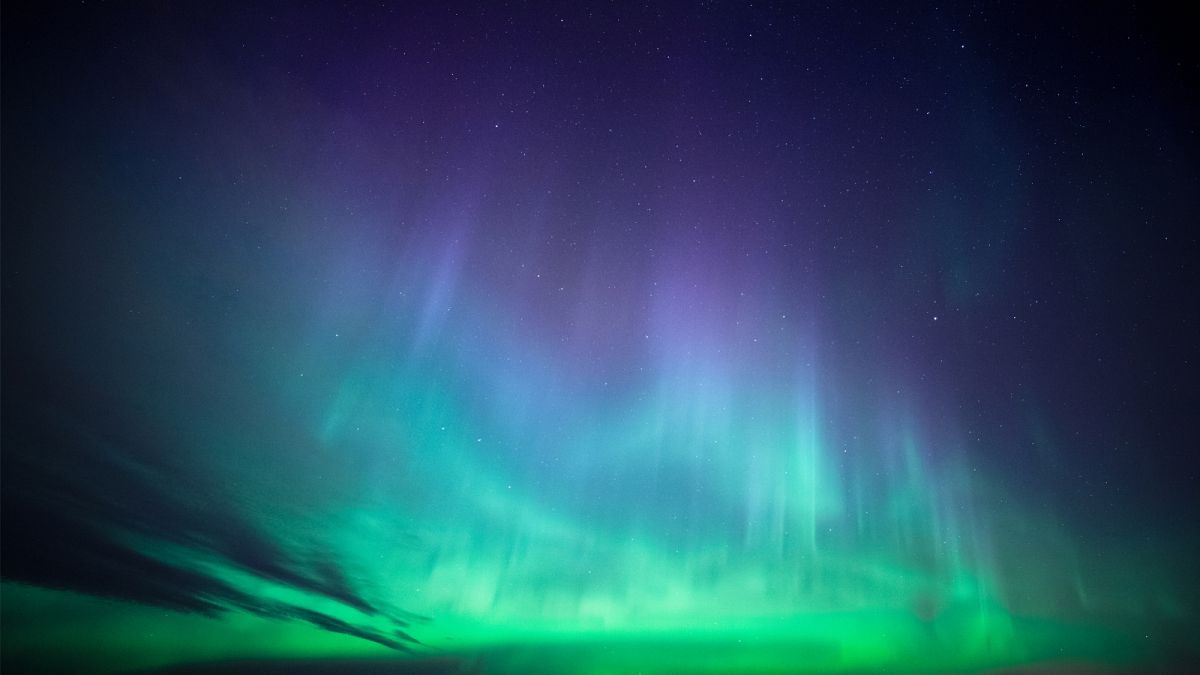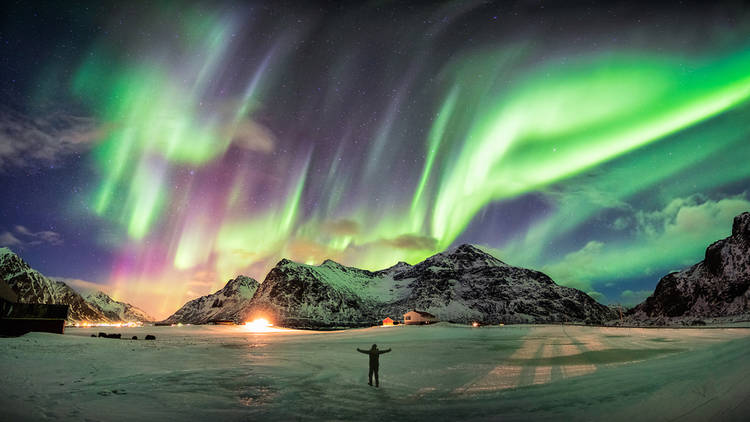1. Introduction – Humanity's Fascination with the Aurora Borealis
Under the frozen northern skies, above snow-covered mountains and silent
forests, the auroral lights dance like colored veils in the dark of
night. For those living near the Arctic Circle, this sight is an old
acquaintance. For thousands of years, the aurora was interpreted as a
sacred phenomenon, sometimes a divine sign, perhaps even a bridge
between people and the universe. Every culture has its own stories, but
they all converge on one idea: the Aurora Borealis is a wonder of the
natural world. You can learn more about it
Aurora Borealis: The Enchanting Mystery and History of the Northern
Lights.
2. Scientific Explanation – How the Aurora Borealis Appears
The Aurora Borealis is, in fact, a spectacular reaction between the Sun
and Earth. It all begins thousands of kilometers away, deep in the heart
of the Sun, where charged particles are released with immense energy.
These particles travel through space on the solar wind and, upon nearing
Earth, they encounter our magnetic field, an invisible shield that
protects the planet. When these particles collide with atoms in the
atmosphere, their energy is released in the form of colored light. This
is the dance of light we see in the sky.

3. Variations in Light and Color
The aurora is like a canvas on which the universe paints in unusual
hues. The color depends on the type of gas encountered by the particles:
oxygen produces green and red tones, while nitrogen gives off a violet
or blue glow. Altitude also plays a role: closer to the ground, green is
most common, while at higher altitudes, rare deep red hues appear. Every
color tells a story of the interaction between particles and the
atmosphere, a unique spectacle each night.

4. Optimal Places and Times for Observation
To truly capture the magic of the aurora, you need to travel to the far
north, where the nights are long, and the sky is clear. Tromsø, Abisko,
and Yellowknife are some of the best locations to see the aurora in all
its glory. From late autumn to early spring, when the sun sets for
weeks, the sky becomes the perfect stage for the aurora. With a little
patience and luck, the dancing lights can offer an unforgettable
experience.

5. Cultural Impact and Mythology
For the indigenous peoples of northern Europe and North America, the
Aurora Borealis was not just a natural phenomenon but part of their
identity and traditions. The Inuit believe the lights are the spirits of
loved ones who have passed, playing in the sky, while the Sami consider
the aurora a symbol of power. Over time, these stories were passed down
from generation to generation, the aurora becoming an invisible thread
connecting people with the heavens, past with present.

6. The Future of Research and the Importance of the Aurora Borealis
Today, studying the aurora is not just a curiosity but an important
field for science. By observing the aurora, researchers can better
understand solar activity and its effects on Earth. The charged
particles that produce the aurora can affect satellites, GPS systems,
and even power grids. Therefore, understanding this phenomenon can help
us anticipate and prevent the potential impacts of solar storms. The
Aurora Borealis is more than a visual beauty; it is a signal of space
activity.

7. Conclusion – The Eternal Beauty and Mystery of the Northern Lights
The Aurora Borealis shows us how small our planet is in the vastness of
the universe, but also how connected it is to it. In the face of such a
light and color spectacle, we become aware of the fragility of our world
and the vastness of the cosmos. The aurora is not just a natural wonder;
it is a calling – an invitation to view our place in the universe and
connect to the beauty and mystery surrounding us.






